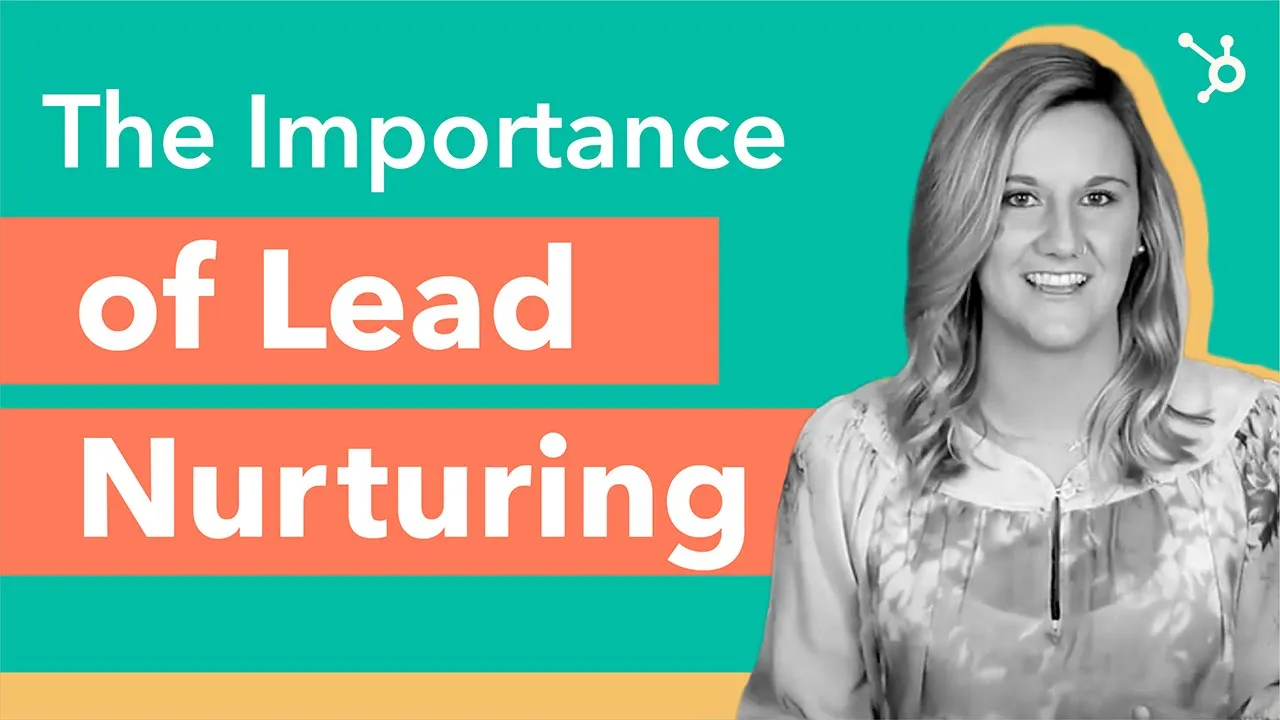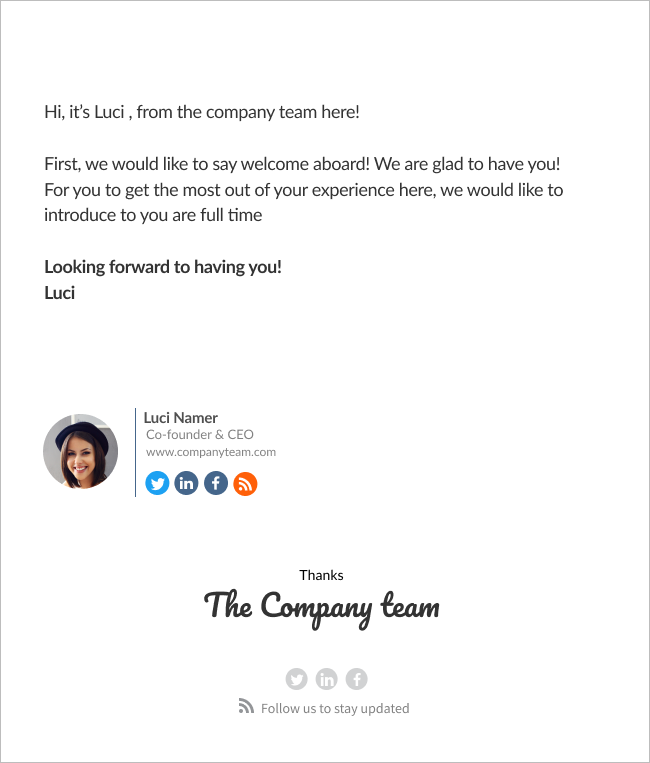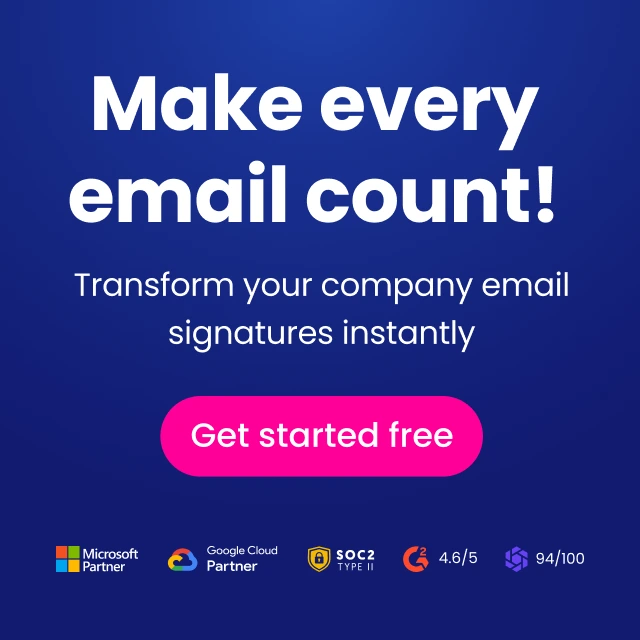Create nurture campaigns with outstanding engagement
Best nurture campaigns examples that will keep your email leads coming back for more. Get insights into email nurture campaigns to help you boost engagement.

If you’re a small business, then your marketing strategy should take advantage of the best email nurture campaigns. These will help drive the greater success of your ads, converting more leads into conversions.
Before we go any further, it’s a good idea to understand some of the terms and lingo we’ll be using.
- Nurture campaign – is a time-based series of emails sent to your mailing list to let your users know about special offers, eventually motivating them to take action.
- Email nurture sequence – is emails you send to your mailing list to deliver value and build trust in you and your brand.
- Lead nurturing emails – is emails that are sent in your nurture campaign that strengthen the relationship between your subscribers and your brand.
What is an email nurture campaign?
An email nurture campaign is a part of what’s called inbound marketing. Its objective is to convert leads on your email list into paying customers. By educating, building relationships, and spreading awareness using nurture campaigns, you can boost your sales conversion rate.
Think of nurture campaigns as investments in your audience. If you want loyal subscribers and to expand your customer base, you need to develop relationships. These need to benefit both your brand and audience.
A nurture campaign is an initiative that will be engaging with your audience organically. The emails you will be sending out to your mailing list subscribers should be inspiring, educational, and meaningful. Any information and messaging that helps your prospective customers on their buyer’s journey will be included in an email nurture campaign
Why do nurture campaigns?
Email nurturing is important because it will increase your sales. Since email still delivers one of the highest conversion rates out of any marketing method out there, you should take advantage of it.
The personalized email campaigns you run will make your audience feel valued and closer to your brand. That’s why most marketing campaigns personalize their lead nurturing emails. These campaigns will inform and educate your leads on who you are, what you do, and why you are the best in your niche.
In business, relationships mean everything. You should cultivate relationships with your leads just as much as with your existing customers. Prospective buyers will want to feel like they can trust your brand and feel connected to it.
The last thing they want is to feel pressured. That will create resistance to them buying anything from you. Instead of pressuring someone into a sale, you nurture them until they are ready to take action and buy something on their own terms.
Lead nurturing will help you engage with your email list’s subscribers in a meaningful way. You stand to gain respect from your audience as someone who is understanding of challenges and problems people face. You will organically offer solutions to those problems and get a monetary kickback for doing so in the form of sales.

When you run an effective nurture campaign, it’s not unusual to enjoy a whopping 50% increase in sales. Also, you get to spend, on average, about 33% less on advertising costs. Email marketing is completely free, so you will want to take advantage of email nurturing campaigns.
What is the buyer’s journey & how does it tie into a nurture campaign?
The buyer’s journey is the path your customers take to awareness, consideration, and evaluation of your products until they are ultimately making a purchase.
- Awareness – the part of the buyer’s journey, the users realize that they have a problem that needs a resolution.
- Consideration – the part of the buyer’s journey, they define their problem and look into potential ways it can be solved.
- Decision – the part of the buyer’s journey, they pick a solution to their problem.
Read more about optimizing your buyer’s journey in email marketing funnels.
Adapt your nurture campaign to each stage of your buyer’s journey
Awareness: At the awareness stage, you can help them realize that there may be a problem they face. They may not have even realized they had a problem in the first place until you told them through your email nurture campaign!
Consideration: At the consideration stage, you explain what that problem is and offer the solutions your product offers to them
Decision: At the decision stage, your nurture campaign seals the deal and gives them a compelling solution in an attractive way.
Essentially, your nurture campaign can guide potential customers on the buyer’s journey instead of them going at it on their own. You focus their awareness on your product being the answer, leading to more sales for you.
Use email nurturing to increase engagement rates
How can your lead nurturing emails increase engagement rates? For that, you will need to make sure your welcome onboard campaign includes campaign desire, content type, and structure.
1) Welcome Campaign
Welcome campaign emails are the first emails your new subscribers will receive. These are looked forward to, enjoy a high open rate, and are easy to automate. These emails are structured and crafted very differently from all of the other emails you will be sending in your nurture campaign.
These elements should be included in your welcome emails:
1. Campaign desire
The most essential component of an email nurturing campaign is the email newsletter you will be sending out to your email list subscribers. This newsletter should be personalized to each prospective customer. By doing so, you can treat them differently according to time frames.
2. Content-type
You can turn your email into a nurturing campaign by introducing something that is coming up down the road. This could be anything from new products and services to upcoming events. Build up hype and spread awareness about anything that will drive sales in the future.
3. Structure
Introduce your new prospect to your brand and products, but slowly at first. You want to avoid overloading them with information because this can turn them off. Remind your new subscribers why they joined your email list while starting an information drip that cultivates their interest.

2) Top-of-Mind Campaign
The purpose of a top-of-mind campaign is to engage with the subscribers of your email list in a way that isn’t so salesy. You’re going to want to churn out these emails regularly to avoid them. This leads to forgetting about your brand and getting poached by your competitors.
These elements should be included in your top-of-mind emails:
1. Campaign desire
Your email nurture sequence is intended to engage with the segment of your audience that is interested, but not ready to buy from you yet. Sending out emails as regular touchpoints is something you should do here, to make sure your prospective customers don’t forget about you. Lead nurturing emails will be sent out over a long period of time, and deliver content that is focused on the value of your prospects.
2. Content-type
Some of the kinds of content you should consider for a top-of-mind campaign include blog posts, white papers, videos, webinars, infographics, and any news relevant to your niche.
The aim here is to deliver value, consistently, to your prospects. The more value they receive from you, the most likely they are to end up as paying customers.
3. Structure
You can embed helpful resources and information directly into your email for maximum engagement. Alternatively, you can provide snippets of value and then direct your audience to head to an external website.
3) Re-engagement Campaign
Not everyone who signs up for your mailing list will end up buying something from you. In fact, many of them will become inactive and stop engaging with you. That’s where re-engagement campaign emails come in. These emails are specifically targeting your inactive leads.
Include the elements in your re-engagement campaign emails:
1. Campaign desire
Most of your prospects will not become paying customers. For whatever reason, they will not end up buying your product. However, these inactive leads can still be re-engaged through a re-engagement campaign.
2. Content-type
The key to effectively re-engaging inactive leads is to find the perfect moment to send a potential customer retention email. You should make this compelling and offer them a perfect opportunity to re-engage with your brand. When you send unique content, such as personalized moments, you can reignite a meaningful and long-lasting relationship with your inactive leads.
3. Structure
A prospective customer retention email could be a “We miss you!” email, delivering a casual message that shows you have been paying attention to them. You can also send a web flow email that informs them of the milestones your brand or product has reached. A time-triggered reactivation email is a third way to structure re-engagement emails that are time-triggered.
3 Tips to help you maximize the effect of your nurture campaigns
In each one of these types of nurturing campaigns, you can maximize their effectiveness by following a few additional tips.
A) Make personalized subject titles:
Your first touchpoint with a subscriber of your email list is the email subject title. Depending on how engaging, interesting, and intriguing it is, your open rate will either be higher or lower. That is why you should humanize your email subject lines and avoid coming across as being too salesy.

b) Perfect a clear and concise opening paragraph that quickly gets to the point:
Once your subscribers open the email, they will shift their attention to the opening line of your email. As with the email subject line, if this isn’t going to capture their attention, they’re going to exit out of the email. You should know how to write the best email opening lines to get your prospective leads to keep reading, letting you continue nurturing the relationship.
c) Don’t neglect a follow up email:
If you notice that your click-through or open rates are low on your initial emails, then you can consider sending a follow-up email in case they missed your previous email. Sometimes life gets in the way and your subscribers have simply never seen your email. That’s what makes a carefully-crafted follow-up email a great idea.
Final Thoughts
Email nurturing can be a powerful tool for increasing your conversion rate. Engaging with your email list subscribers using specific types of email campaigns will allow you to guide prospects on their buyer’s journey. You will also be delivering value and strengthening the relationship between your brand and your prospects.
From brand awareness all the way up to repeat customers, nurture campaigns should become an essential tactic of your overall digital marketing strategy.

